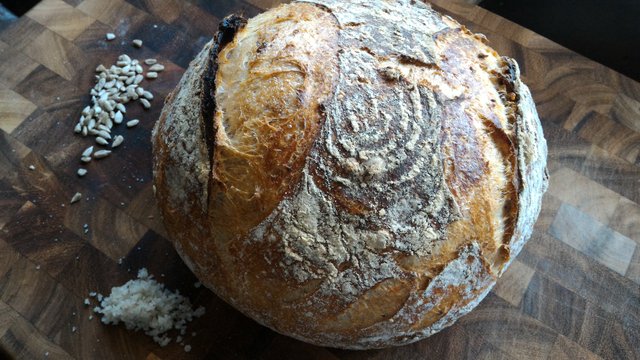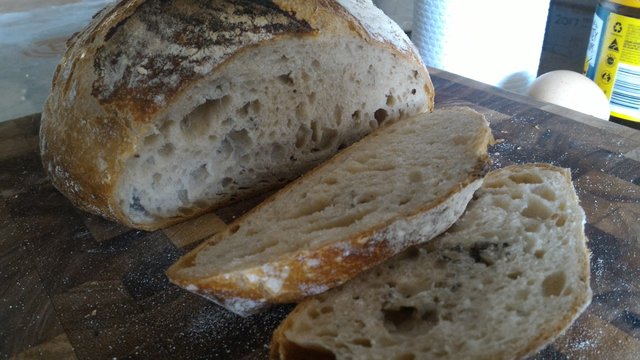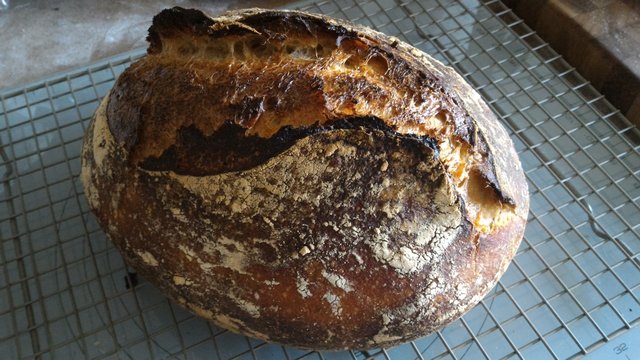Bread done two ways
A little experiment with my bread this weekend. These two loaves were mixed and proofed together, but one was baked soon after shaping, the other had another 24 hours of cold fermentation in the fridge.
These are chia, sesame, and sunflower seed. It's my go-to blend at the moment, as they each have different size and texture so it's a good combination. The dough is 20% whole wheat, and 75% hydration. A little more sourdough starter than normal (30% vs 20%) to offset the cool evenings we're having.
The starter was fed at 5:30pm Friday evening, and the dough mixed around 10pm*.At 9am the next morning they were shaped, one was proofed while the oven warmed up and baked at 10am. The other was left in the fridge and baked on Sunday morning.

The obvious benefit of this method is all the hard work is done Friday evening, and you get fresh bread both Saturday and Sunday mornings!

The long cold fermentation gives the sourdough time to work its magic at a slow pace. All the sourdough flavour characteristics have time to develop, yet the yeast activity is slowed enough at that temperature that it doesn't over-proof. Finding the right balance between time and flavour is really a personal preference, and part of the fun of home baking. I find anywhere between 8-48hrs of cold ferment to be a nice range to play in.

This one went quickly, so there are no pictures inside. But the crumb was a little more uniform.
Aside from the obvious shape differences (we have two bannetons of different shape, and matching dutch ovens), there were slight flavour differences. The first loaf came out nicely, maybe a little underproofed in the centre. The second gave us a little more sourness as expected (still quite subtle), and brought out some more of the nutty characteristics of the seeds. Whether this is from the fermentation or just the contrast to the sour flavour, I'm not sure. The other difference is a chewier, thicker crust on the long fermented loaf. This matches my past experience, and is probably from the surface drying out a little in the fridge.
*This method of using a young starter is taken from Chad Robertson's Tartine Bread. It works great all through the warmer months, where you can mix the dough before bed and shape in the morning, pop them in the fridge or bake. This was a Saturday morning so they got a few extra hours rise time.
Very pretty loaves! I used to mill flour and bake bread with the meal, but I no longer have a good mill. (Or a good wheatberry supplier, for that matter.) This makes me want to start up again, though!
Cool. I would like to grow some wheat in France (just out of curiosity) and play with the milling process. We could never grow enough for our usage, obviously.
We're lucky enough here in Australia to have a supply of very fresh organic flours.
que bueno! great pics!
thank you! the sun came out just briefly to add a little light.
You have great content !!! ! I also write a blog about food, and all that is connected with it! Come into my account, you may find something interesting for yourself!have a good mood! Steem On!!!
looks great, I'll check it out!
Well done @aubergedulis! This is to let you know that your post is featured on the Steemitrecipes Daily Picks - Entry 005!
thank you muchly!